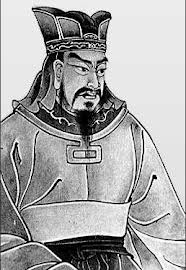For Authors, Entrepreneurs, Speakers, and Business Leaders – Surviving the “Valley of Death” (Until Your “Kingdom” Can Support Itself)
In the Game of Thrones (Season 2), young heroine Daenerys Targaryen, her dragons, and her loyal followers nearly die during a passage through the Red Waste.
The Red Waste is by no means the only challenge that young Daenerys has confronted, as she seeks to become the ruler of the Seven Kingdoms. In fact, of all the contenders to the Iron Throne, it is Daenerys who both has the greatest right (by legitimate bloodline), and yet – at the same time – the weakest position.
Of all contenders for the Iron Throne, Daenerys has the fewest followers, and (by the end of Season Two) has dealt with both losses and betrayals. She has, practically speaking, no money. All that she has – besides her royal lineage – are her three young, vulnerable, fire-breathing dragons.
Her dragons are not ready to conquer any kingdoms for her. They are more like toddler children, dependent on her for food.
How Are We Like the Game of Thrones’ Daenerys Targaryen?
We may, like Daenerys, have what Sun Tzu described as moral influence. Daenerys has royal lineage and three fire-breathing dragons. You may have a visionary insight and your own “creative fire,” and perhaps a newly-launched product, service, or book. What you offer may (figuratively) be a “fire-breathing dragon-weapon,” but if it is still young (as are Daenerys’ dragons), this product/service/book will need tending, much more than it can actively support you.
If you are starting from scratch, and building up your newly-launched business, or book or product launch on a shoestring budget, you will be more like Daenerys than will be comfortable. The reason?
You’re on what Sun Tzu has described as Death Ground; your own equivalent of Daenerys’ Red Waste.
Lessons from Sun Tzu on Death Ground
In The Art of War, Book XI, Sun Tzu describes nine different kinds of “ground,” or terrain.
As we know from the previous post, Kingmaker, terrain is essential to our survival. In Sun Tzu’s world (and in that of many military leaders), terrain was physical. Over the past many decades, corporate leaders have defined terrain in terms of market share, shelf space, number of franchises, and retail sales.
For us, living in the world where ideas and information are dominant, our terrain is mindshare – an elusive and valuable commodity.
While gaining physical control over physical terrain has required armies, and huge supply lines and command chains to keep these armies going, we work in the world of ideas, knowledge, and influence. Our ability to capture terrain – mindshare – requires that we get top-priority attention in people’s minds.
Unless we start off with an unusually strong position – that is, we already have a strong and loyal customer base – we are in the position of Daenerys. We are on Death Ground.
Sun Tzu (The Art of War, Book XI, Phrase 10) describes Death Ground:
Ground in which the army survives only if it fights with the courage of desperation is called ‘death’.
In commentary (also in the Art of War, right after Sun Tzu’s statement), Li Ch’üan says:
Blocked by mountains to the front and rivers to the rear, with provisions exhausted. In this situation it is advantageous to act speedily and dangerous to procrastinate.
Why So Many Authors Sell Only 200 Books
A common (and somewhat frightening) truism among the emerging-author community is that most books sell only 200 copies. The reason?

“Circles of Influence,” from “The Democratization of Social Influence,” by Todd Wilms, SAP, appearing in Forbes Magazine, 06/08/2012.
The “circle of influence” for most authors reaches only about 200 people.
Think about it. If you comb your email list, you probably have about 200 names and email addresses. Likewise, you probably have about 200 people with whom you connect via Facebook and LinkedIn.
There are about 200 people in your immediate social circle; those whom you see on a regular or semi-regular basis. This includes your family members (telephone connections count), college chums and former roommates, current and former work associates, professional/civic/non-profit organization connections, and people whom you see at regular church, temple, mosque, or synagogue services. Count them all up: people whom you know by name, would stop to say “hi,” catch up.
It’s about 200, right?
Now, if you were to present each of these with your new service, product, or book, you’d get a certain fraction to buy. Let’s assume, just for fun, that you “convert” 50%. That is, out of your “circle-of-influence” of 200 persons, you close sales with 100.
Then, over time, by diligently working to expand your circle, you make another 100 sales.
These new sales are to people whom you have not know before; they come to you strictly because of your unique service/product/book, and not because they already know and like you.
Your “reach-outs” include every media that you can think of: public appearances, press releases, articles for trade magazines, and regular and religious postings on Facebook and other social media. You appear on radio and/or TV. You are, in short, religious about spreading your word.
And – over a year’s worth of time – you have made about 100 additional sales.
Your resources are exhausted; you’re dispirited. And you’re about to give up the dream, and go back to a “day job” as the only means by which you’ll survive for this lifetime.
You’re on Death Ground.
Surviving Death Ground – An Advance Preparation Strategy
The goal of Mourning Dove Press is to help authors bridge the gap – from a life-threatening 200 sales – to a robust, on-the-way-to-success 2,000 sales, and greater. At 2,000 sales, we figure, you’ll have your “machine” in place. You’ll know what to do, and will be somewhat skilled in doing that-which-needs-to-be-done. And you’ll be almost ready to bring in some more professional, heavyweight talent who will support you in moving to the next level; publicists and more powerful IT teams, etc.
Simply put, at the level of 2,000 sales, you’ll have enough revenue from the sales themselves to help you support your own infrastructure.
The challenge is to get from the nearly-predictable 200 to the far-less-predictable 2,000. This is your own, personal, private “Valley of Death.” Your own version of author’s hell.
The next blogpost will give specific survival strategies.
There are things that must be done – that WILL be done – by any successful author, professional, or entrepreneur. These are necessary, and they take time. They are part of why it DOES take time to get through our own “Valley of Death.”
However, there are things that we can do – at the outset – that will lead to building our “kingdom” (our “tribe”) even as we go through the “Valley of Death” stage. If we do these things right – and if we do them in the right order – and if we start early enough – we have a chance of surviving. Our book/product/service will go on to start generating income. We will actually reach the other side – to Daenerys’s city of Qarth. To the pioneer’s West Coast. To the Hebrew people’s “land of milk and honey.”
Our goal is simply to survive the journey through the desert (on manna and miracles, or so it will seem), and to shorten the timeline. Our goal is to we can cut the “time in the desert” from Moses’ forty years to less than a year. If we can do this, we will, as military strategist and Sun Tzu commentator Li Ch’üan advised, have “acted speedily.” Then, we will have not only survived, but will be likely to succeed.
P.S. Are you fascinated by the character Daenerys Targaryen from George Martin’s The Song of Ice and Fire and HBO’s series the Game of Thrones? Peter Schmidt, Professor of English Literature at Swarthmore College, has written an interesting and in-depth profile of her. Read Peter’s blog: Some Reasons Why Daenerys Targaryen’s Character Is Even Better in Game of Thrones Than in Song of Ice and Fire.




